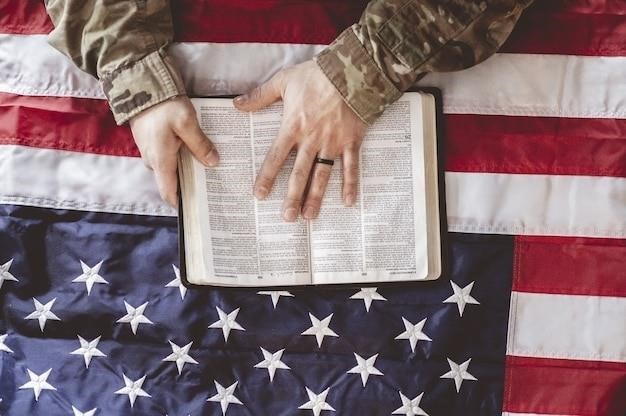Cataclysm Inscription Guide
This comprehensive guide will help you level your Inscription profession from 1 to 525 in World of Warcraft’s Cataclysm expansion. Learn about the best materials, recipes, glyphs, and tips for each level range. You’ll find out how to craft glyphs, scrolls, relics, and other essential items;
Introduction
Welcome to the exciting world of Inscription in World of Warcraft’s Cataclysm expansion! This comprehensive guide will equip you with the knowledge and strategies to master this versatile profession, unlocking its full potential for both PvE and PvP content. Inscription, with its unique ability to craft powerful glyphs, scrolls, relics, and more, will enhance your gameplay experience, allowing you to customize your character’s abilities and maximize their effectiveness. Prepare to delve into the intricacies of Inscription, from its fundamental principles to advanced crafting techniques and strategies. This guide will be your trusted companion as you navigate the rewarding path of Inscription in Cataclysm.
Inscription in Cataclysm
In the Cataclysm expansion, Inscription takes center stage as a profession that empowers players with a wide range of crafting possibilities. While primarily known for its glyphs, which enhance abilities and provide unique benefits, Inscription also encompasses the creation of other valuable items. Players can craft scrolls for stat buffs, relics for extra bonuses, and even Darkmoon decks for a chance at powerful trinkets. The profession’s core revolves around the use of herbs, which are milled into pigments, and these pigments are then transformed into inks used to craft the various Inscription items. Cataclysm introduces a new Prime Glyph system, adding a layer of complexity and choice to glyph crafting. With its diverse crafting options, Inscription offers a rewarding and impactful experience for players seeking to enhance their characters and gameplay.
Leveling Inscription
Leveling Inscription in Cataclysm follows a straightforward path of crafting various items to gain experience. The early levels involve crafting basic glyphs and scrolls, while higher levels require more advanced recipes. The key to efficient leveling is to focus on crafting items that grant the most skill points per craft. This often involves identifying glyphs or other items that are currently in high demand on the auction house, as their sale can offset the cost of materials. Herbalism serves as a natural companion profession to Inscription, as it provides the necessary herbs for pigment creation. However, purchasing herbs on the auction house is also a viable option, especially when specific herbs are in high demand. As you progress through the leveling process, you’ll unlock new recipes, including Prime Glyphs, which are crucial for endgame crafting. By strategically managing your crafting choices and material acquisition, you can efficiently level your Inscription skill and unlock its full potential in Cataclysm.
Inscription Materials
Inscription relies heavily on two primary materials⁚ herbs and parchment. Herbs are the foundation for creating inks, the essential ingredient for crafting glyphs and other inscription items. You’ll use the unique Milling ability, learned alongside Inscription, to transform herbs into pigments. These pigments are then combined with other materials to produce inks. The type of herb determines the resulting pigment and, ultimately, the ink’s properties. For example, milling Violet herbs yields Violet Pigment, which can be used to make Violet Ink. Herbalism is the ideal companion profession for Inscription, allowing you to gather your own herbs. However, purchasing herbs on the auction house is also a viable option, especially when specific herbs are in high demand or you prefer to focus on crafting. Parchment, the second key material, serves as the canvas for inscription items. It comes in different qualities, influencing the level of the crafted item. You can purchase parchment from Inscription suppliers in major cities. By managing your herb supply and parchment inventory, you’ll be well-equipped to craft a wide array of inscription items, from basic glyphs to powerful prime glyphs.
Crafting Glyphs
Glyphs are the heart of the Inscription profession, providing unique bonuses to spells and abilities. They are crafted using inks, parchment, and specific recipes. Each glyph falls into one of three categories⁚ Prime, Major, and Minor. Prime glyphs are the most powerful, offering significant enhancements to abilities. They are crafted using rare inks and require a high Inscription skill level. Major glyphs provide a moderate boost to spells and abilities, while Minor glyphs offer minor enhancements. The specific bonus provided by a glyph depends on the recipe used. For example, a glyph might increase the damage of a spell, reduce the cooldown of an ability, or improve the effectiveness of a talent. Crafting glyphs requires a good understanding of the different recipes, inks, and parchments. You’ll need to choose the right materials for the desired effect and level of the glyph. As you level your Inscription skill, you’ll unlock new and more powerful glyph recipes, expanding your crafting options and allowing you to create increasingly potent enhancements for your spells and abilities.

Prime Glyphs
Prime glyphs are the most potent glyphs available in Cataclysm, offering substantial enhancements to spells and abilities. They are crafted using rare inks, such as Ink of the Sky, Darkflame Ink, and Ethereal Ink, and require a high Inscription skill level. These inks are often difficult to obtain, making prime glyphs highly valuable. The effects of prime glyphs can significantly impact a character’s performance, making them sought-after by players seeking to maximize their character’s potential. For example, a prime glyph might significantly increase the damage output of a spell, reduce the cooldown of a crucial ability, or enhance the effectiveness of a talent. However, crafting prime glyphs is not for the faint of heart. It requires a significant investment in resources, time, and skill. You’ll need to carefully consider the cost and effort involved in creating these powerful glyphs, ensuring that the benefits outweigh the investment.

Major Glyphs
Major glyphs are a staple for players seeking to enhance their abilities in Cataclysm. These glyphs offer a significant boost to various spells and abilities, making them a valuable addition to any character’s arsenal. They are crafted using less rare inks than prime glyphs, such as Jadefire Ink, Lions Ink, and Celestial Ink. This makes them more accessible to players at a lower Inscription skill level. Major glyphs are particularly useful for optimizing a character’s performance in both PvE and PvP content; For example, a major glyph might increase the damage output of a spell, reduce the cooldown of a crucial ability, or improve the effectiveness of a talent. They offer a noticeable improvement in a character’s abilities without requiring the same level of investment as prime glyphs. Players often choose to use a combination of major and prime glyphs to create a well-rounded build that maximizes their character’s potential.
Minor Glyphs
Minor glyphs are the most readily available type of glyph in Cataclysm, offering a smaller but still valuable enhancement to spells and abilities. They are crafted using the most common inks, such as Moonglow Ink, Midnight Ink, and Ivory Ink. This makes them easily attainable for players at any skill level. Minor glyphs are often used to fill out a character’s glyph slots, providing a subtle but noticeable improvement to their gameplay; They might reduce the mana cost of a spell, increase its range, or add a small visual effect. While their effects may not be as dramatic as prime or major glyphs, they can still contribute significantly to a character’s overall performance. Players often choose to use minor glyphs to tailor their character’s abilities to their specific playstyle or preferences. For example, a minor glyph might enhance a spell that is frequently used in a particular type of content, or it might add a visual flourish that enhances a character’s aesthetic appeal;
Other Inscription Items
While glyphs are the most sought-after creations of Inscription, Cataclysm also introduces a variety of other items that scribers can craft. These items provide a range of benefits, from stat boosts to unique effects. One of the most notable items is the Darkmoon Card of Destruction, which can be crafted using a random deck from the Darkmoon Faire. The card can then be turned into a trinket, offering a powerful temporary boost to a character’s stats. Scribes can also create scrolls that provide a temporary stat buff to players, offering a valuable advantage in combat or other activities. These scrolls are particularly useful for leveling characters or for providing a quick boost to a player’s performance in a specific situation. In addition to these items, scribes can craft relics, which are off-hand items that provide a stat bonus. These relics are particularly useful for players who are looking to maximize their character’s stats in a particular area, such as damage output or critical strike chance. Inscription also offers the ability to craft self-only shoulder enchants, which provide a unique bonus to a character’s armor. These enchants are a valuable option for players who are looking to enhance their character’s performance without relying on expensive or difficult-to-obtain enchantments.
Endgame Inscription
As you reach the endgame in Cataclysm, Inscription becomes a highly valuable profession for both PvE and PvP content. Scribes can craft glyphs that enhance a character’s abilities, offering a significant edge in combat and other activities. The demand for high-quality glyphs remains strong throughout the expansion, making Inscription a lucrative profession for players seeking to earn gold. The profession also offers a unique advantage in PvP, as glyphs can be used to tailor a character’s abilities to a specific combat situation. Scribes can craft glyphs that enhance a character’s offensive capabilities, making them more deadly in PvP encounters. Alternatively, they can craft glyphs that bolster a character’s defensive abilities, making them more resilient against enemy attacks. This flexibility allows scribes to adapt to different playstyles and preferences. In addition to glyphs, scribes can also craft other items that are highly sought after by endgame players. These items include relics, which provide a stat bonus to a character’s off-hand slot, and scrolls, which offer a temporary stat buff. These items are particularly valuable for players who are pushing the limits of their character’s performance in endgame content, such as raids and battlegrounds; As a result, Inscription remains a highly relevant and rewarding profession in Cataclysm’s endgame.
Inscription Resources
To excel in Inscription, you’ll need to gather a variety of resources. The primary ingredient for crafting glyphs and other inscription items is pigments. These pigments are created by milling herbs using the Milling ability, which you learn alongside Inscription. There are numerous herbs available in Cataclysm, each producing a different type of pigment. Some of the more common herbs used for Inscription include⁚ Violet Lotus, Golden Sansam, and Firebloom. These herbs can be gathered using the Herbalism profession or purchased from the Auction House. The Auction House is a valuable resource for acquiring herbs, especially if you’re not a Herbalist. You can often find herbs at competitive prices, allowing you to focus on crafting instead of gathering. In addition to herbs, you’ll also need parchment to craft glyphs and other inscription items. Parchment comes in various qualities, with higher quality parchment providing additional benefits. You can purchase parchment from Inscription suppliers located in major cities. The quality of parchment you purchase will influence the quality of the items you craft, so it’s essential to choose the appropriate parchment for your needs. Lastly, you may need certain rare materials for crafting specific glyphs or items. These materials are typically obtained from dungeons, raids, or other sources. Always check the recipe for the item you want to craft to determine the required materials. By gathering the necessary resources, you’ll be well-equipped to master Inscription in Cataclysm.
Inscription in Cataclysm is a versatile and rewarding profession. It offers a unique way to enhance your character’s abilities with glyphs, provide helpful buffs with scrolls, and even create unique gear items. By mastering the art of inscription, you’ll be able to support your own gameplay and potentially earn a decent profit through crafting and selling your creations; Whether you’re a seasoned veteran or a new adventurer, Inscription is an excellent choice for players seeking a fulfilling and profitable profession. As you delve deeper into the world of Cataclysm, keep in mind that the Inscription profession is constantly evolving. New recipes, materials, and glyphs are introduced with each update, so stay informed about the latest changes. Don’t be afraid to experiment with different crafting techniques and explore the vast possibilities that Inscription offers. With dedication and a little bit of creativity, you’ll unlock the full potential of this fascinating profession. So, grab your herbs, parchment, and inks and embark on an exciting journey as a master inscriber. Happy crafting!


















